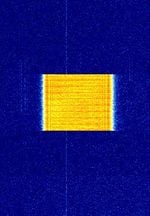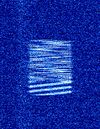LoRa
| IOTInternet of Things | |
|---|---|
| Wide-area: SIGFOX* (Europe) - NB-IOT (Worldwide) - LTE-M (Worldwide) Local: Zigbee* (Worldwide) - 802.11ah* HaLow (Worldwide) - LoRa* (Worldwide) *ISM |
LoRa (Long Range) is a proprietary low-power wide-area network modulation technique. It is based on spread-spectrum modulation techniques derived from chirp spread spectrum (CSS) technology. LoRa enables long-range transmissions with low power consumption. The technology covers the physical layer, while other technologies and protocols such as LoRaWAN (Long Range Wide Area Network) cover the upper layers. It can achieve data rates between 0.3 kbit/sKilobits per second (kbps) and 27 kbit/sKilobits per second (kbps) depending upon the spreading factor.
Frequencies[edit]
LoRa uses license-free sub-gigahertz radio frequency bands like EU433 (433.05-434.79 MHzMegaHertz (MHz) 10^6 Hz) and EU863-870 (863-870/873 MHzMegaHertz (MHz) 10^6 Hz) in Europe; AU915-928/AS923-1 (915-928 MHzMegaHertz (MHz) 10^6 Hz) in Australia; US902-928 (902-928 MHzMegaHertz (MHz) 10^6 Hz) in North America; IN865-867 (865-867 MHzMegaHertz (MHz) 10^6 Hz) in India; and AU915-928/AS923-1 and EU433 Southeast Asia.


